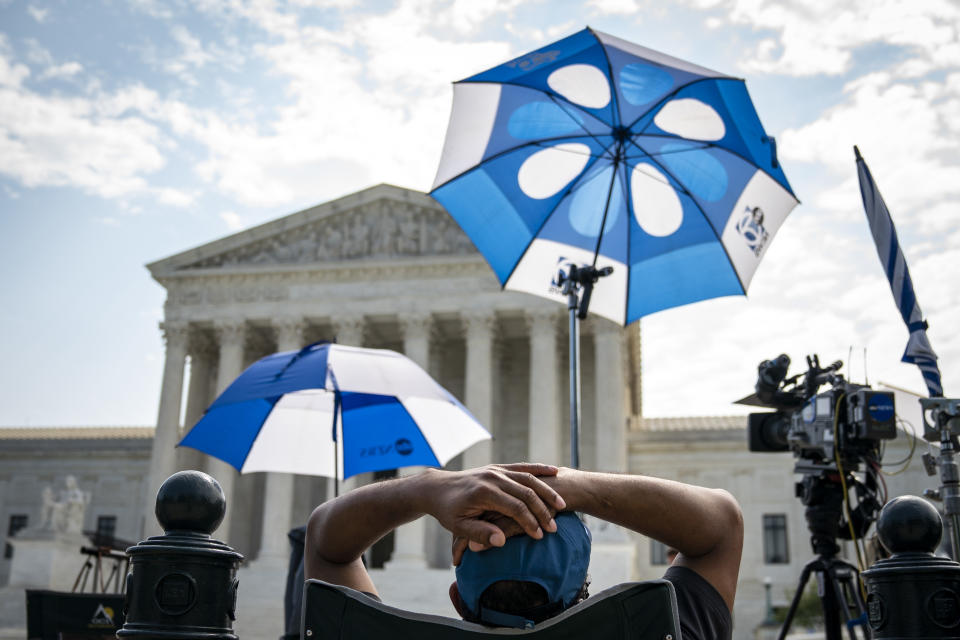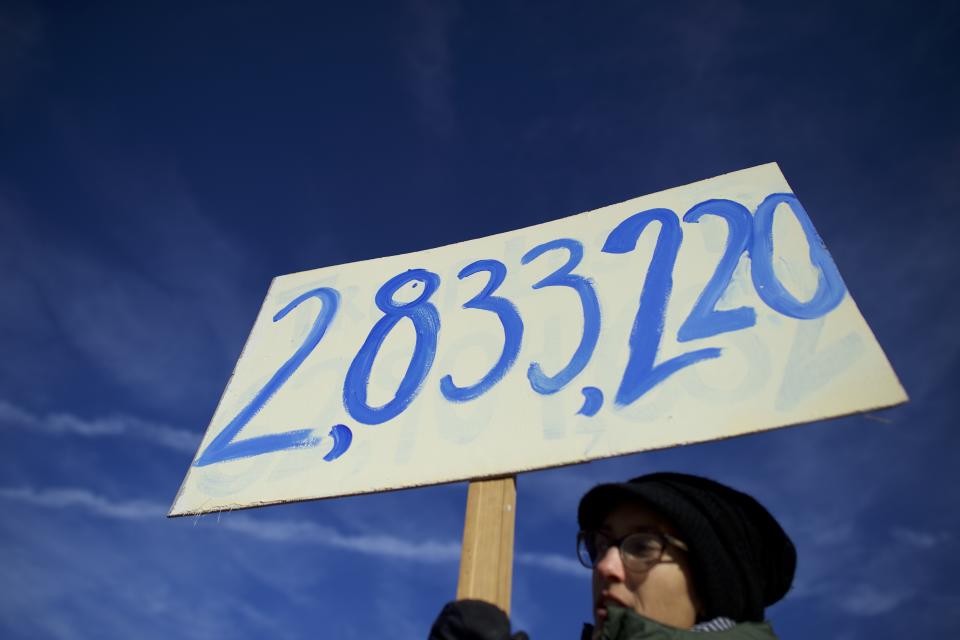What happens when the minority rules America
As we all march with trepidation towards Election Day, (or week or month), I figured I’d weigh in on politics a bit again. And of course there’s a business angle to it.
If President Trump wins re-election and the GOP holds the Senate, we’ll be looking at least two to four more years of Republican doctrine when it comes to laws governing our economy and society. If you’re a fan of Donald Trump, that’s all good.
But there’s a potential wrinkle here that even Trumpofiles might want to contemplate, and it goes something like this.

It’s possible that if Donald Trump wins he may do so, (again), without winning a majority of the popular vote. Tough noogies, you say. That’s just how our system works sometimes. It’s happened in five out of our 58 presidential elections, and 2020 would be the sixth. No big deal.
Let’s dig deeper.
A two-time, non-popular vote winning president would be unprecedented in our nation’s history—and I say not in a good way. The fact is, (and I guess you have to hand it to them), the Republicans have won the popular vote for president only once in the last 20 years but have controlled the presidency for 12 years of those two decades.
But I’m not writing or complaining about what Republicans do when it comes to taxes or regulation or foreign policy. I’m writing about the GOP, or any party in fact, being in power without a mandate from a majority of Americans.
I fully appreciate protecting minority interests—in this case ensuring that big bad urban Democrats don’t quash rural Republicans. Everyone gets that. The fact is though, entrenched minority rule, Republican or Democrat, is flat out bad for America.
“I’m a firm believer in protecting minority rights. It’s at the heart of liberal democracy. That’s why we have the Bill of Rights and judicial rule. Federalism as well,” says Daniel Ziblatt, professor of political science at Harvard University and co-author of a recent op-ed in the New York Times entitled, “End Minority Rule.” “It becomes a problem in principle when you repeatedly have a situation where instead of minority rights you have minority rule.”
Correct, Daniel. That’s the important distinction: Minority rights, yes. Minority rule, no.

Our nation’s founders sought to protect all Americans. They didn’t want to empower a smaller group at the expense of a larger one. How do I know that, a Republican friend wonders? Simple. Imagine if the shoe was on the other foot and Democrats were the minority party in power. How would you feel? The only truthful answer is, “I would say it’s unfair. (Saying, ‘the Democrats would do the same thing’ is not responding to the question.”)
Threats to the integrity of U.S. democracy contribute to a perception of instability, which unsettles the economy and markets. “Why do U.S. Treasuries command a risk premium?,” asks veteran analyst Richard Bernstein, founder of Richard Bernstein Advisors, about our current political state. “It’s clear that the world is viewing the U.S. differently than it used to.”
I’m well aware this hand-wringing could all be moot Tuesday (or whenever we find out who our next president is), in one of two ways. Donald Trump could win the popular vote and the Electoral College, or Joe Biden could win the popular vote and the Electoral College.
But there’s a good possibility that 2020 will be 2016 redux in terms of popular vote/Electoral College, so I’d like to tease this out a bit further.
First, the presidency isn’t the only branch of our government ruled by the minority. Consider the Senate, which overtly protects smaller states by giving Delaware two senators, same as Texas has. That’s fine, but things have changed lately. For instance, the New York Times notes that “Democrats easily won more overall votes for the U.S. Senate in 2016 and 2018, and yet the Republicans hold 53 of 100 seats. The 45 Democratic and two independent senators who caucus with them represent more people than the 53 Republicans.” And there’s the point that North and South Dakota have four senate votes representing 1.6 million people. California now has two senators representing almost 40 million people.
So yes the Senate of course was designed to protect small states, or to boost the minority. The problem is, it’s getting over-boosted. The population of the four biggest states; California, Texas, Florida and New York grew by a combined 8.2 million over the past decade. The combined population of the four smallest; Wyoming, Vermont, Alaska and North Dakota, grew by 124,000.
The House of Representatives does represent by population though right? Not exactly. The number of reps was capped at 435 in 1929 when the population of the U.S was one-third the size. Each congressperson should represent 708,000 citizens. Instead each serves anywhere from 989,000 to 526,000. (And don’t get me started with gerrymandering and trying to mess with the census.) Some are calling for the number of representatives to be dramatically increased to address these imbalances.
And then there’s the Electoral College.
I tend to think of the EC as a kind of hybrid of the House and Senate models, in that yes, electoral votes are portioned by population like the former, but the winner-takes-all formula (which every state except Nebraska and Maine uses), is more reflective of the Senate.
In case you didn’t know, the number of electors in each state is equal to the sum of the state's membership in the Senate and the House, (which famously adds up to 538.) As such, this confers an advantage to smaller population states. For instance, North Dakota (tied for the least with three electoral votes) has approximately one electoral vote per 224,000 people, while California (which has the most with 55 electoral votes) gets about one vote per 677,000 people.

But of course, it’s the winner-takes-all model that really contributes to minority rule. Take the great state of Texas. Usually considered a GOP stronghold, (the last time the Lone Star State voted for a Democrat was Jimmy Carter in 1976.) Today though the state is increasingly purple. Of the state's 36 Congressional districts, 13 are represented by Democrats. If Trump wins Texas though, he’ll get all of the state's 38 electoral votes—or 14% of the 270 needed to win the White House—even though Biden is poised to run stronger than Clinton, who in fact received 43% of the vote there in 2016.
The nation’s four most populous states, California, Texas, Florida and New York (33.1% of the country’s population) had 21.7 million votes for Clinton and 15.8 million for Trump in 2016. That’s a margin of almost 6 million votes, which is also greater than the combined total population of red states Wyoming, Alaska, North Dakota, South Dakota, Montana and Idaho.
Running close in states you lose and winning big in the states you win is potentially a recipe for losing the popular vote, which is what happened to Clinton and could happen to Biden. In fact Trump, who lost the popular vote by some 2.9 million votes last time around (it’s actually 2,868,686), could even lose by 5 million votes this year and still win, according to NBC News and others.
Someone recently pointed out to me that sure, Hillary beat the Donald by 2 million-plus popular votes, but that “Hillary won California by more than 3 million votes [actually 4,269,978 ] which means the Donald won the rest of [sic] the country. This is why we use the Electoral College, so EVERY state is represented, and has a say in our election. I would hate to see our country run as California is.”
Interesting.
Let me take the tertiary, second point first. True the government of California has been a bit dysfunctional lately, but that doesn’t mean if we did away with the Electoral College our federal government would have to be worse than it is now. (BTW, even with all its foibles, the Golden State’s population still grew by 2.6 million over the past decade.)
As for the first point, main point though, that’s kind of an otherwise-Mrs. Lincoln-how-did-you-like-the-play argument, isn’t it? Or, it’s like saying that if Trump didn’t win Texas he would’ve only received 268 electoral votes and would have lost the election.
But even more than that, how much should it really matter where we live when it comes to picking the president? Why should it be the case that your vote is in a sense as worthless in Wyoming, (68% voted for Trump) as it is Massachusetts (60% voted for Clinton.)
If the Electoral College produces these distortions, what purpose is it really serving?
Or let me put it this way: At what point does minority rule become unacceptable to you? Last election the minority party got 46.1% of the popular vote versus the majority’s 48.2% and won the presidency. This year the deficit could be 5%. Would 10%, 15%, or 25% still be palatable? If you acknowledge that at some point this becomes wrong, then isn’t any deficit unfair?
What’s so bad about the popular vote anyway?
Another point for the GOP to consider is that minority rule goes against its core principles of supporting free markets. Ziblatt explains: “The Republican party is a protected firm in a marketplace, artificially benefiting from the political system in a way that allows it to win even when it doesn’t win a majority. If we had really free democratic competition, it would have to change its strategy. If a firm is selling shoes and nobody shows up at the shop, you change the product you sell. When Republicans can not win a majority and still get power, market pressures are blunted. Getting rid of minority rules allows the political marketplace to work its magic.”

The Republicans have been doing everything in their power to further their political and economic agenda, which is their right and their prerogative. But no American should truck with the attempt to entrench their position as the minority in power through voter suppression, gaming the census, blocking immigration, or deterring statehood for Washington D.C. and packing courts solely for the purpose of not relinquishing power.
This leads us down the path from minority rule to one party rule. That is not American and never will be.
Question here: If Biden is elected and the Democrats get a majority in the Senate, how would they respond to all this? Some Democrats have suggested that they pack the Supreme Court, i.e., add more justices. Outrageous!, cry Republicans. But in fact the Supreme Court has changed size seven times over our history, (though not since 1869.) The Democrats could push for the aforementioned statehood for Washington D.C. as well as the five U.S. territories: Puerto Rico, Guam, the Northern Mariana Islands, the U.S. Virgin Islands and American Samoa, which have 3.7 million combined residents. There's getting rid of the filibuster in Congress too. But this would be challenging.
“I’m not on board with the idea we’re going to get more Supreme Court justices. I think Biden is lukewarm toward the idea. Polls show the public is not enthusiastic about it,” says veteran Washington watcher, Greg Valliere, the chief U.S. policy strategist at AGF Investments. “We can’t be certain all the Democrats are monolithic. I don't think we’re there on the filibuster, don’t think we’re there on Puerto Rico and D.C. It’s very unlikely.”
Is it too much to dream though, of a solution that both sides could agree upon? “Ideally it would be bipartisan. In theory, all parties should be interested,” says Ziblatt. “When the norm broke down for a two-term presidency, when Roosevelt governed four terms, the response wasn’t to keep doing four terms or play hard ball, with the Republicans seeking four terms. There was an effort to pass a constitutional amendment to change the rules.”
Ziblatt is referring to the 22nd Amendment of the Constitution, passed in 1951, which simply states, “No person shall be elected to the office of the President more than twice…” If Trump loses, I would bet at the very least he will talk about running in 2024, but what if he wins this fall? In fact, Trump has said on a number of occasions recently that he would “negotiate” for a third third term because he’s “entitled” to it.
If a majority of Americans truly want him to be president for a third term, I might be on board with it. But I very much doubt that would be the case.
This article was featured in a Saturday edition of the Morning Brief on October 31, 2020. Get the Morning Brief sent directly to your inbox every Monday to Friday by 6:30 a.m. ET. Subscribe
Andy Serwer is editor-in-chief of Yahoo Finance. Follow him on Twitter: @serwer.
Read more
How the 6 swing states will play in the election and in the markets
What America can learn about reopening from the state of Maine
Read the latest financial and business news from Yahoo Finance